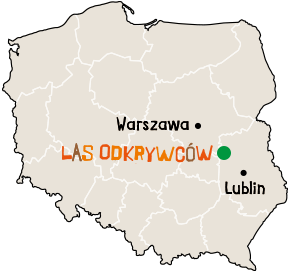Tree trunks. Identify a tree by its bark
Tree bark is composed of dead, cork cells. It protects the cambium and the rest of the tree against temperature fluctuations, excessive sunlight, water loss and damage from organisms such as fungi or insects. Later, we show you interesting examples of how diverse tree bark is.
The hornbeam (Carpinus betulus) has bark that is a smooth, dark gray color with dark stripes.
In turn, the common oak (Quercus robur) has a dark, deeply fissured bark.
The bark of a white poplar (Populus alba) is a grayish-white or greenish color that can sometimes appear chalky, especially on the branches.
Look up to the top of a Scots pine (Pinus sylvestris.) The bark on the branches closer to the crown, as well as on its trunk, is orange or brick-red in color. In young trees, it is also thin and flaky. Older trees have thin cracked bark near the trunk.
The bark of a Norway spruce (Picea abies) is a reddish-brown color. This tree also gives off the impression that it has scales, as the bark peels in a protruding circular manner.
Initially, a European larch (Larix decidua) appears to have bark that is a smooth greenish-brown color. As the tree ages, the bark cracks, peels and turns a red or grayish-brown color.
Hey, Explorer!
Search through our forest for the trees named on this board. Do you think you can find them all?!

